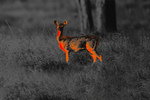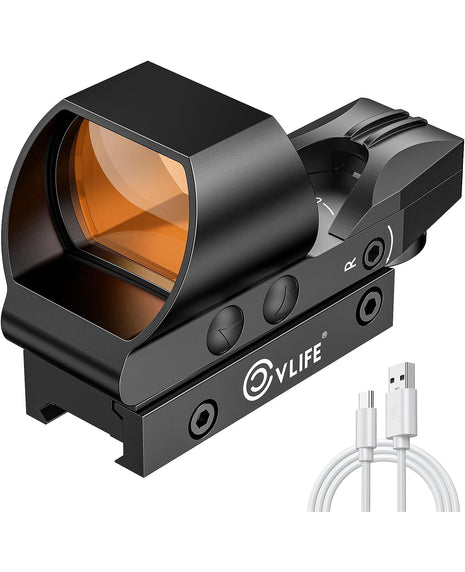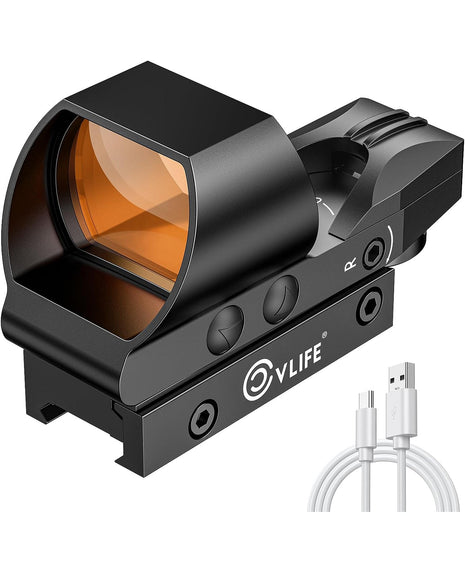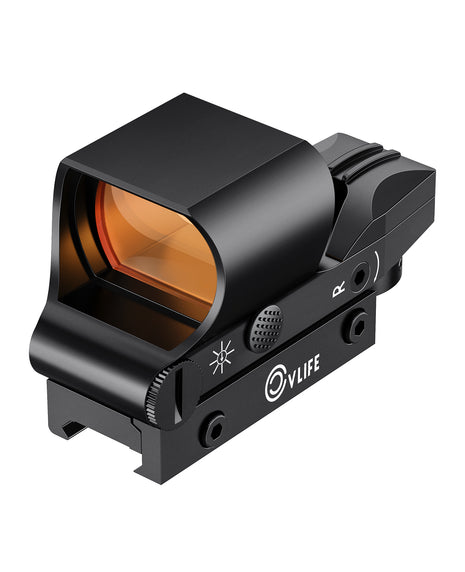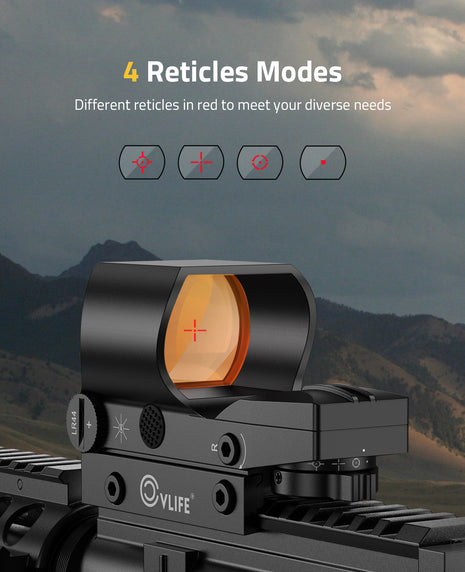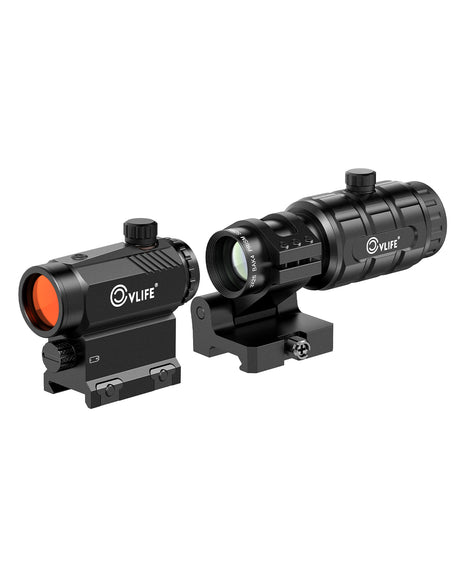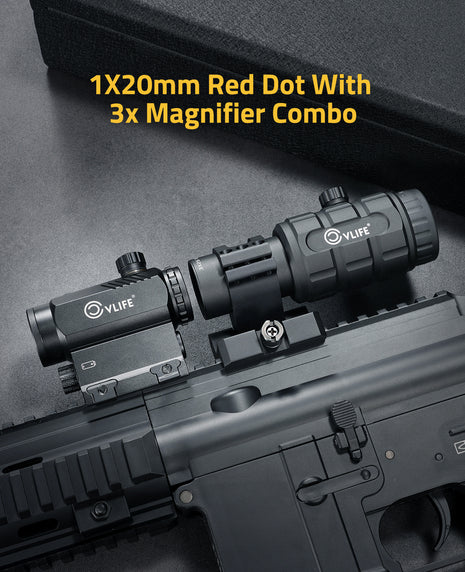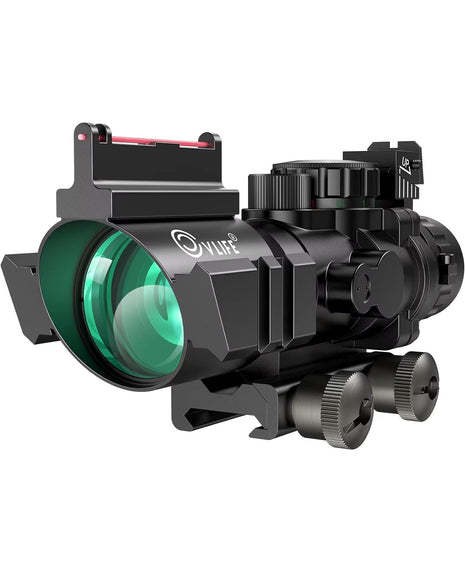I. The Rise of After-Dark Hunting
Night hunting — once a niche pursuit — is increasingly common across many U.S. states and in parts of Europe. Driven by growing populations of hogs, coyotes and other nocturnal species, improved optics, and the tactical advantage of superior visibility after sundown, more hunters are equipping themselves with night vision and thermal rifle scopes. Outdoor publications like Outdoor Life report expanding interest in low-light optics for both pest control and sport hunting.
That interest isn’t just casual — modern night vision and thermal scopes materially change what is possible at dusk, dawn and full night. Whether you're glassing ridgelines or sitting boiler-plate still for a hog patrol, seeing the right optic clearly improves safety, shot selection, and ethical outcomes.
II. Why Traditional Optics Struggle in Low Light
Conventional hunting scopes rely on ambient light. As dusk approaches the eye and even the best glass lose contrast: targets blend into background clutter, color fidelity drops, and small movement is harder to detect. In fog, light rain, or thick canopy, optical clarity degrades further.
Night vision and thermal technologies address these limits in different ways. Night vision amplifies what little visible light exists (moonlight, starlight, or artificial illumination), while thermal imaging detects heat signatures regardless of visible light. Understanding the technical differences helps you choose the right tool for your typical night-time scenarios.
| Technology | Primary Benefit | Best Use |
|---|---|---|
| Traditional Scope | Sharp daylight clarity | Daylight and bright day |
| Night Vision | Amplifies low light for detailed images | Moonlit nights, dawn/dusk, forested areas |
| Thermal Imaging | Detects heat signatures; works in total darkness | Full nights, fog, smoke, light vegetation cover |
III. How Night-Vision and Thermal Scopes Work
Night Vision (Image Intensifier)
Night-vision systems use image intensifier tubes to amplify low ambient light. They are excellent for enhancing contrast and identifying features in near-dark conditions when there is some light to work with (moon or starlight). Night vision generally delivers detailed shapes and outlines which help identify species where color contrast matters.
Thermal Imaging
Thermal scopes detect infrared radiation emitted by objects as heat and convert it into a visible image. Animals show up as warm shapes against a cooler background, making them easy to spot even in complete darkness or in light fog. Thermal is advantageous for detection at distance and under adverse atmospheric conditions.
Digital Hybrids & Trends
Many modern units blend capabilities: digital night vision overlays, onboard recording, Wi-Fi streaming, and intelligent target highlight. These hybrid features are becoming mainstream and will continue to evolve in 2025. Manufacturers are building scopes with improved battery life, higher frame rates, and smarter algorithmic image processing to reduce false positives and enhance target clarity.
Quick tech takeaway: Night vision helps you see detail where low light exists; thermal helps you see heat. Choose based on the environment and the job — spotting vs confirming a humane shot placement.
IV. Regional Realities — U.S. vs. Europe
Regulatory environments and common targets differ between the U.S. and Europe. It’s essential to check local rules before hunting at night. The U.S. Fish & Wildlife Service is a starting point for federal guidance, but state wildlife agencies set the rules that govern night hunting in each state. For example, several Southern and Western states allow nocturnal hog control with certain restrictions, while some states limit or ban night hunting for specific species.
In Europe, regulations are often more prescriptive and vary country to country. Some nations permit night hunting for pest species under permit and strict welfare rules; others restrict night operations. Always confirm rules with your local hunting authority before planning a night hunt.
Practical tip: If you’re traveling to hunt, contact the regional game authority and read current legislation. Game & Fish and local state pages are good practical resources: Game & Fish Magazine.
V. How to Choose the Right Scope for Night Hunts
Choosing a night-capable optic is a tradeoff between detection distance, target identification, durability, and budget. Below are practical buying criteria with direct relevance to real hunters.
1. Define your primary mission
Are you trying to detect animals at long range (thermal excels here) or identify subtle features in low light (night vision excels)?
2. Optics & Magnification
For night operations, variable magnification LPVO-style optics (1–10x) are popular because they allow fast 1x acquisition and reach for longer shots. Read the detection range specs but prioritize real-world reviews over marketing numbers.
3. Reticle, Holdovers and Ballistics
Look for reticles designed for low-light use or illuminated BDC reticles that work well with your cartridge. If you frequently engage at different distances, a reticle with usable holdover stadia (or an integrated ballistic app) reduces guesswork.
4. Sensor Resolution & Refresh Rate
Higher resolution sensors and faster refresh rates provide smoother, clearer images — especially useful when tracking moving game. Prioritize refresh rate for active fields where animals move quickly.
5. Battery Life & Field Reliability
Thermals and digital night units are power hungry. Choose systems with long battery life, or plan for secondary power banks. Durability (IP rating for water/dust protection) and shock resistance matter in field conditions.
6. Price vs Value
Thermal systems often cost more than pure night vision. Consider whether the extra detection capability is mission-critical. CVLIFE provides options built to deliver value for different budgets — robust enough for field work and backed by practical warranties.
CVLIFE Night & Thermal Picks — At a Glance
BearMight Smart Night Vision Rifle Scope
Night-vision digital scope ideal for dawn/dusk identification with built-in recording and clear on-screen reticle.
BearMight 1–4×25mm Thermal Rifle Scope
Compact thermal system optimized for quick detection at close-to-medium range — useful for patrols and hog control.
BearMight 384×288 25mm Thermal Rifle Scope
Higher resolution thermal engine for crystal-clear images and improved target confirmation. Ideal for hunters needing a clear thermal image.
VI. Safety, Ethics & Legal Considerations
Night hunting carries special responsibilities. Confirm species identification beyond doubt, understand the legal framework where you hunt, and prioritize humane shot placement. Many jurisdictions require written authorization or restrict night hunting for certain species — always consult local regulations first.
Hunter education and safety resources are essential. Many state wildlife agencies offer night-hunting guidance and safe practices. Additionally, the U.S. Fish & Wildlife Service and local game departments publish legal rules and permit requirements.
Ethical reminder: Use night optics to locate and identify only lawful targets. If identification is uncertain, do not shoot. The combination of better detection and stricter ethics improves outcomes for wildlife and hunters alike.
VII. Field Tips for Effective Night Hunts
- Scout in daylight: Learn travel routes, bedding areas, and terrain features before hunting at night.
- Practice on the range: Become comfortable with reticle illumination, parallax, and holdovers under your scope’s night settings.
- Use a two-step approach: Detect with thermal, identify with night vision or magnified optics when possible.
- Mind concealment: Your movement and thermal signature can give you away — minimize heat-producing gear.
- Bring backup power: Batteries can fail in cold weather; carry spares and know your power consumption.
VIII. FAQ — Hunters Also Ask
Thermal or night vision — which should I buy first?
If your priority is detection in total darkness and through light vegetation, thermal is the stronger detection tool. If you need detailed identification under low but present light, night vision may be more suitable. Many hunters combine both approaches depending on budget.
How far can thermal scopes detect animals?
Detection ranges depend on sensor resolution (e.g., 384×288, 1920*1080), lens size, and environmental conditions. Higher resolution and larger lenses increase detection distance.
IX. Conclusion — See Better, Hunt Smarter
Night vision and thermal technologies have moved from specialty gear to mainstream tools for many hunters. They broaden the window of opportunity, improve detection and identification, and — when used responsibly — enhance ethical outcomes. Whether you’re addressing a hog problem or expanding your seasonal options, choose the optic that matches your terrain, mission, and budget.
CVLIFE's BearMight and BearPower lines deliver practical, field-ready night and thermal options designed for hunters who value reliability and clarity. Explore our selection and use code HLW30 to save 30% this October at CVLIFE.com. Gear up safely and see what others cannot. 🦌

